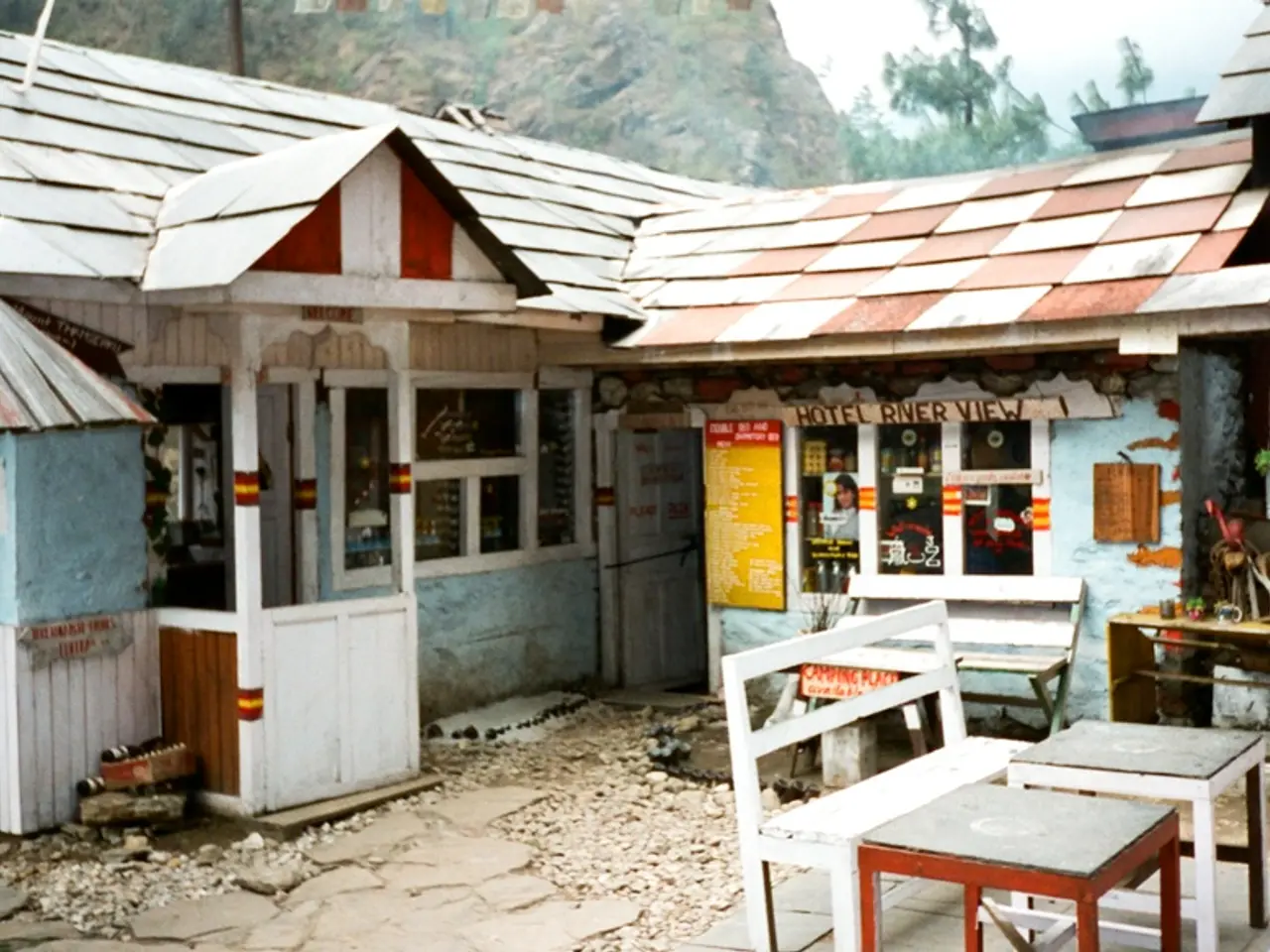Discovering Turpan: Journeying through Silk Road history to modern-day grape landscapes
Nestled in the heart of Xinjiang, the ancient city of Turpan offers a captivating blend of history, culture, and unique agricultural achievements. For a day trip, visitors can explore the top attractions that showcase the city's character and its significance along the Silk Road.
1. The Flaming Mountains, with their striking red sandstone hills and extreme heat, are a testament to the region's harsh climate and historical importance. This area offers unique geological formations and abundant cultural relics, reflecting the region's rich heritage and its role as a key trading hub.
2. The Grape Valley, famed for its vineyards and delicious grapes, embodies Turpan's exceptional agricultural practices. The valley's vineyards benefit from the dry but sunny desert climate, and irrigation through Karez systems enables grape cultivation here. Visitors can taste fresh grapes and experience the vibrant local ethnic customs.
3. The Ancient City of Jiaohe, a UNESCO World Heritage Site, highlights Turpan's history as a Silk Road trading hub. This ancient city, once a bustling cultural and commercial center, provides insight into early urban planning and the region's long-standing human habitation.
4. The Turpan Karez Museum of Folklore preserves and explains the Karez underground irrigation system—an ingenious water-conservancy engineering marvel dating back over 400 years. Visitors can explore tunnels, see vertical shafts, and learn how these channels helped sustain Turpan’s agriculture and settlements in a desert environment. The site also offers cultural experiences like Uyghur traditional music, dance, craft-making, and bazaars.
5. The Kumtag Desert reveals Turpan’s vast desert landscapes and strengthens appreciation of its environment and the adaptive strategies of its people.
These attractions represent Turpan’s character in various ways:
- History and Culture: The ruins of Jiaohe and the Flaming Mountains connect visitors with Turpan’s ancient Silk Road heritage and traditional stories, showcasing the city's pivotal role in regional trade and cultural exchange. The Karez Museum with cultural performances demonstrates the Uyghur ethnic heritage and living traditions.
- Agricultural Achievements: The Grape Valley and the Karez irrigation system exemplify local adaptation to extreme desert conditions, turning barren land into rich farmland through advanced water management and sustainable practices. This agricultural ingenuity underpins Turpan’s reputation as a "Fire Continent" where viticulture thrives despite arid climate.
In addition to these sites, visitors can also explore the Karez Folk Garden, situated in Xinchengximen Village, Gaochang District, about 3 kilometers from downtown Turpan. The garden offers a unique blend of Uyghur folk culture and a comprehensive look into the history of the region. For a memorable experience, the Jiaohe Night program allows visitors to explore the ancient ruins after sunset, enjoying quiet, calming melodies of traditional instruments and performances by Uyghur musicians, poets, and storytellers.
Finally, Yarhu Grottoes, located in mountain caves, offers a glimpse into religious exchange along the Silk Roads, with multilingual inscriptions on the murals providing tangible proof of this exchange.
In summary, a one-day trip can encompass these key sites to vividly experience Turpan’s historical depth, cultural vibrancy, and remarkable agricultural innovation, all intertwined in its unique desert landscape.
- As guides lead visitors through the Ancient City of Jiaohe, they unravel stories of the city's historical significance as a major trading hub along the Silk Road.
- For a complete understanding of Turpan's unusual agricultural practices, tour the Grape Valley, where local guides explain the clever Karez system that allows vineyards to flourish in the desert.
- Exploring the Flaming Mountains on a trip reveals the harsh extremes of the region's climate, while also showcasing cultural relics that speak to the area's historical importance.
- Embark on an eco-cultural tour of the Karez Museum of Folklore, where local guides provide tours of the underground irrigation system, and share the stories of traditional Uyghur music, dance, craft-making, and bazaars.
- The Kumtag Desert offers a unique opportunity for tourists to explore the vast desert landscapes, engaging with the adaptive lifestyle of the local people.
- In addition to these key sites, visitors can explore the Karez Folk Garden, gaining insights into the history and Uyghur culture of the region, and experiencing live performances by traditional musicians, poets, and storytellers during the Jiaohe Night program.
- The Yarhu Grottoes provide a window into religious exchange along the Silk Road, with guide-led tours revealing multilingual inscriptions on the murals within the mountain caves.
- By visiting these sites, the traveler gains a comprehensive understanding of Turpan's cultural travel opportunities, experiencing its historical depth, lively ambiance, and agricultural achievements all woven into the desert landscape.





